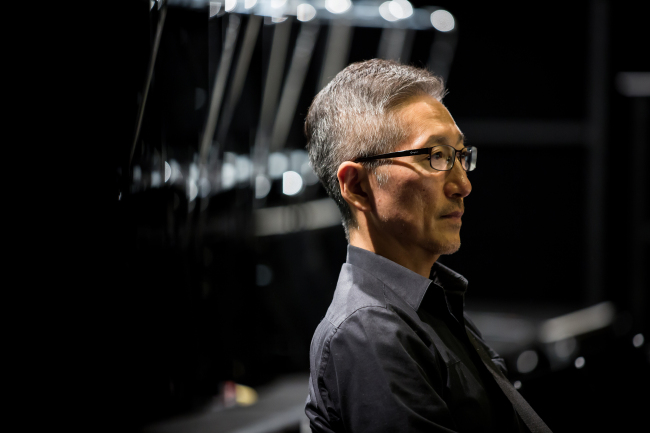When Ahn Sung-soo took the helm of the Korea National Contemporary Dance Company at the end of last year, he came to the job prepared. That is, the seasoned choreographer already had in his mind the first two works he would stage.
Yet, it was scarcely more than a week before the curtain would go up that Ahn decided the piece was finally complete.
“It was completed just yesterday,” said Ahn at his office at Seoul Arts Center on July 19.
“Music for Rites -- The Afterimages of the Rose,” the first of two pieces Ahn had in mind for the 7-year-old company, starts its three-day run Friday at the CJ Towol Theater of the Seoul Arts Center in southern Seoul.

Ahn Sung-soo, Korea National Contemporary Dance Company artistic director (Aiden Hwang/KNCDC)
Ahn, who choreographed and directed the piece, describes it as a paean to Koreans and their culture. Noting the country had just come through a turbulent period, he said, “Through this work, I seek to instill in Korean people pride in our culture and also express the wish for its continued development in the future.”
Well-known for works that deconstruct and reconfigure Korean and Western dance, Ahn also wants to communicate the beauty of Korean culture to the world. In fact, a number of his previous works have been performed abroad to enthusiastic audiences, who have responded to the “newness” of Ahn’s attempts.
“I think the most beautiful movement is one that eloquently expresses the music,” he said. It is not at all surprising, then, that music plays a central role in his work. For “Music for Rites” Ahn collaborated closely with a young composer, Ra Ye-song.
It all started with a two-minute sample that Ra sent Ahn in January. From then on, it was a continuous back and forth between the choreographer and the composer, a line inspiring a movement, and the movement, in turn, informing the next line. This delicate dance between choreographer and composer resulted in music that so satisfied Ahn that a concert featuring the dance music was held earlier this month, well before the premiere of the dance itself.
“Minimalistic” is how Ahn describes the music that will be performed onstage by a five-member ensemble of traditional Korea instruments. “There is a three-minute section without dance. Just music, with voice,” he said, adding, “That is the highlight.”
“Music for Rites” features movements involving a dancer beating the traditional five standing drums. “The rhythms are entirely new, completely different from the traditional drum rhythms,” Ahn explained.
While the music may be minimalistic, the dance itself is anything but. The arm and hand movements taken from traditional Korean dance movements, and the leg and footwork based on traditional ballet movements have all 15 dancers of the company engaged in a dazzling conversation of physical movements.
For “Music for Rites,” Ahn has dancers learning ballet in the morning and basics of Korean traditional dance in the afternoon, before starting the actual practice for the piece.
“Music for Rites” is the final installment in Ahn’s exploration of gut, or traditional Korean shaman ritual. Unlike his previous works on the subject, “Music for Rites” is a celebratory rite, one that pays homage to all women -- named and unnamed -- who have left their indelible mark in Korean history, Ahn said. “According to the composer, ‘rose’ stands for women,” he added.
As artistic director, Ahn has greater leeway in initiating new attempts to change people’s perception of contemporary dance and get more people to enjoy it. “Swing,” which will be staged next April, is one such attempt in which the KNCDC will collaborate with a Swedish jazz band. “It is a project aimed at using the opportunity to bring the audience from the outdoors into the theaters,” he said.
Why would the public think modern dance is difficult? “When you try to show your philosophy, the piece becomes difficult. When a piece requires a lot of explanation, then it is difficult to understand. Naturally, the audience feels alienated,” he said.
“The safest way is to create works that people will feel good about, even when just listening to the music,” he said.
By Kim Hoo-ran (khooran@heraldcorp.com)






